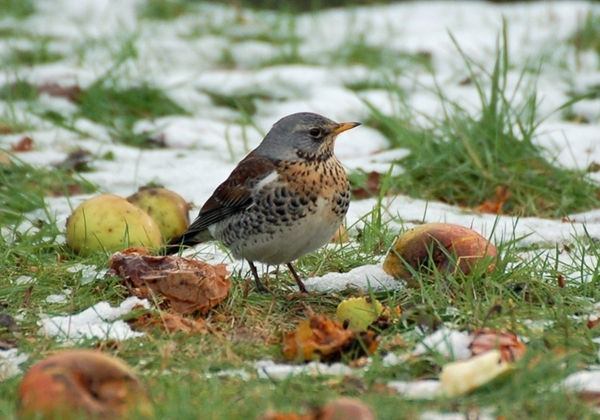
Pic by Pete Thompson
WILDLIFE enthusiasts across the country are being urged to take part in the Big Farmland Bird Count (BFBC), which is back for the seventh successive year.
The nationwide citizen science project calls on farmers, land managers and gamekeepers to spend 30 minutes spotting species on their patch of land between the 7th and 16th February 2020.
Crucially, the results will aim to determine which farmland birds are benefiting from conservation efforts while identifying the ones most in need of help.
Organising the count this year is Dr Roger Draycott, who is head of advisory services for the Game & Wildlife Conservation Trust (GWCT), pictured below.
He said: “Farmers and gamekeepers are vital in helping to ensure the future survival of many of our most cherished farmland bird species like skylarks, yellowhammers, corn buntings and wild grey partridges.
“They are responsible for managing the largest songbird habitat in this country on their land but frequently their efforts to reverse bird declines are largely unrecorded. We believe our Big Farmland Bird Count will help remedy this.”
“We understand the crucial role that land managers play in the survival of farmland birds and we want to give them an opportunity of showing what their conservation efforts deliver on the ground”.
 “It is also a satisfying way to discover the different range of birds that are on the farm and the results can be surprising. We hope it will spur land managers on to do even more work for their farmland birds in the future and that it will act as a catalyst for them to start building their own long-standing wildlife records.”
“It is also a satisfying way to discover the different range of birds that are on the farm and the results can be surprising. We hope it will spur land managers on to do even more work for their farmland birds in the future and that it will act as a catalyst for them to start building their own long-standing wildlife records.”
Last year was another record-breaking count with 1,400 people counting – a 40% increase on the previous year, recording 140 species over 1 million acres. We are delighted that many landscape-scale farmland conservation projects are now taking part in the count and we are now able to feedback results at the landscape level as well as the individual farm level.
Encouragingly, a total of 30 red-listed species were recorded in 2019, with five appearing in the most-commonly seen species list. These included fieldfares, starlings, house sparrows, yellowhammers and song thrushes, with the first four seen by over 30% of the farms taking part.
The BFBC was launched in 2014 to highlight the positive work done by land managers in helping to reverse the decline in farmland birds. The count offers a simple means of recording the effects of any conservation work currently being undertaken by farmers and gamekeepers on their land, such as supplementary feeding birds through winter or growing crops specifically to provide seed for birds.
The NFU is sponsoring the count for the second year running and President Minette Batters said: “The NFU is extremely pleased to be once again sponsoring the GWCT Big Farmland Bird Count - an event that highlights perfectly how farmers balance excellent conservation work on farms across the country alongside producing the nation’s food."
“Farmers carry out a huge amount of work to maintain and enrich habitats and wildlife and are responsible for protecting, maintaining and enhancing 71% of the nation's iconic countryside.
“I would encourage all farmers to take part in the February count and submit your records to the GWCT, so we can pull together a vital national snapshot of the state of nation when it comes to farmland birds.”
At the end of the count, the results will be analysed by the Trust. All participants will receive a report on the national results once they have been collated.
The GWCT would like to extend its thanks to the NFU for being the main sponsor and all our partners for actively promoting the count to their members and supporters.
How to take part in three simple steps
1) Download your count sheet from the BFBC website www.bfbc.org.uk
2) Count your birds! On a day between 7th and 16th February, spend about 30 minutes recording the species and number of birds seen on one particular area of the farm.
3) Once you've completed your count, simply submit your results at www.bfbc.org.uk
Notes to editors
The Game & Wildlife Conservation Trust – providing research-led conservation for a thriving countryside. The GWCT is an independent wildlife conservation charity which has carried out scientific research into Britain’s game and wildlife since the 1930s. We advise farmers and landowners on improving wildlife habitats. We employ 22 post-doctoral scientists and 50 other research staff with expertise in areas such as birds, insects, mammals, farming, fish and statistics. We undertake our own research as well as projects funded by contract and grant-aid from Government and private bodies. The Trust is also responsible for a number of Government Biodiversity Action Plan species and is lead partner for grey partridge and joint lead partner for brown hare and black grouse.
For information, contact:
Eleanor Williams
Telephone: 07592 025476
Email: press@gwct.org.uk